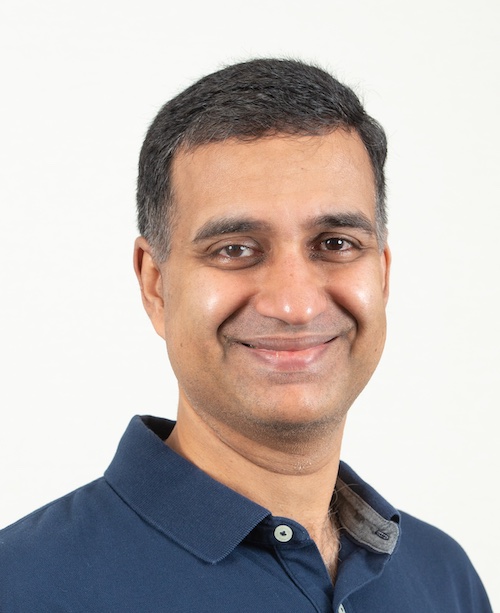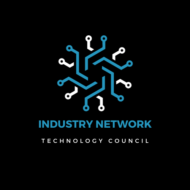
This presentation will describe the use case of deep space networking, the key considerations to deploy such a network, and its requirements. It will also describe the current plans of the space agencies and private sector for Moon and Mars deployments. It will then describe the proposed solution. This work is being standardized in IETF by the newly formed working group called TIPTOP (Taking IP to Other Planets). A description of the working group, milestones and current work will conclude the presentation.
Guest Speaker:
Marc Blanchet is president of Viagenie, a consulting firm on Internet engineering. He has been involved in IETF for 35 years, wrote 17 RFC, co-chaired many IETF working groups, including DTN, and was an IAB member. He is the investigator of the Deep Space IP initiative which folded into the TIPTOP working group, where he is technical advisor and delegate. He is the founder of the Space Assigned Numbers Authority (SANA) which does a similar role to IANA, but for space communications standards of the CCSDS. He is currently leading the Moon networking governance group of the Interagency Operations Advisory Group (IOAG).

The IETF has kicked off efforts to standardize preferences for how content is collected and processed for AI model development, deployment, and use. This webinar will dive into the scope, deliverables, and timelines of this important new work.
Details:
The IETF has started work to standardize the building blocks that allow for the expression of preferences about how content is collected and processed for Artificial Intelligence (AI) model development, deployment, and use. The work will be done at the newly created aipref (https://datatracker.ietf.org/wg/aipref/about/) working group. This talk will discuss the scope of the work, the expected deliverables and the timeline.
Guest Speaker:
Suresh Krishnan works as a Distinguished Engineer (Strategy, Incubation and Applications) at Cisco. He has a Bachelor’s degree in Electrical Engineering from the University of Madras in India and a Masters degree in Electrical Engineering from Concordia University in Canada. He has chaired the dna, intarea, softwire and shmoo working groups in the IETF, the mobopts research group in the IRTF and has authored more than 40 RFCs across multiple IETF areas. He is a member of the Internet Architecture Board. He currently serves as a chair for the bpf(INT) and aipref(WIT) working groups. He has served as IETF Internet Area Director from 2016-2020.
Two-part IPv6 Fundamentals and IPv6 MultiCast training course, led by Networking and IPv6 expert Nalini Elkins. We encourage you to register now for this exciting opportunity!
Details:
To be successful in implementing and understanding IPv6 networks, you need to first understand the IPv6 address methodology which is, in many ways, a fundamental change from the IPv4 paradigm. In this introduction, you will become familiar with what is different as well as what is the same with IPv6. Network engineers and systems engineers who are familiar with IPv6 addresses are welcome. This two part series will cover:
● Public and private addresses
● IPv6 Prefixes
● IPv6 Address Structure
● IPv6 Interface ID
● IPv6 Addressing and Address Allocation Methods (stateless, statefull)
● Address types, unicast, multicast, anycast
● Address categories: global, site local, link local
● Unique Local Unicast addresses
● Zero compression
● Special addresses (loopback, unspecified, IPv4 mapped IPv6)
● Broadcast address elimination
We will also do an introduction to Neighbor Discovery (ND). The Neighbor Discovery Protocol is one of key building blocks of IPv6, though it creates an alphabet soup of acronyms (NDP, RA, RS, NS, NA, DAD, MLD, SLAAC, RDNSS). We will describe how NDP works and its basic functions, including addressing and routing.
● Neighbor Discovery Protocol (NDP)
● Router Advertisements (RA)
● Router Solicitation (RS)
● Neighbor Solicitation (NS)
● Neighbor Advertisement (NA)
● Duplicate Address Detection (DAD)
● Multicast Listener Discovery (MLD)
● Stateless Address Autoconfiguration (SLAAC)
● Router Advertisements for DNS (RDNSS)
GUEST SPEAKER
Nalini Elkins is the CEO and Founder of Inside Products, Inc, and the President of the Industry Network Technology Council. Nalini is a recognized leader in the field of computer performance measurement and analysis and has been the founder or co-founder of three start-ups in the high-tech arena. Nalini started her career doing network design and monitoring for the Chevron network. She specializes in network performance analysis, measurement, monitoring, tuning, and troubleshooting of large enterprise networks. One of her specialties is training and network design for IPv6 migration for large enterprises. Many Fortune 1000 level companies as well as large US government organizations have taken her classes on various networking topics. She
has developed network monitoring and diagnostic products which were later marketed by IBM and other software companies. She received the A.A. Michelson award from the Computer Measurement Group for her contributions to the field. Nalini is on the Advisory Board of the India Internet Engineering Society (IIESoc).
Two-part IPv6 Fundamentals and IPv6 MultiCast training course, led by Networking and IPv6 expert Nalini Elkins. We encourage you to register now for this exciting opportunity!
Details:
To be successful in implementing and understanding IPv6 networks, you need to first understand the IPv6 address methodology which is, in many ways, a fundamental change from the IPv4 paradigm. In this introduction, you will become familiar with what is different as well as what is the same with IPv6. Network engineers and systems engineers who are familiar with IPv6 addresses are welcome. This two part series will cover:
● Public and private addresses
● IPv6 Prefixes
● IPv6 Address Structure
● IPv6 Interface ID
● IPv6 Addressing and Address Allocation Methods (stateless, statefull)
● Address types, unicast, multicast, anycast
● Address categories: global, site local, link local
● Unique Local Unicast addresses
● Zero compression
● Special addresses (loopback, unspecified, IPv4 mapped IPv6)
● Broadcast address elimination
We will also do an introduction to Neighbor Discovery (ND). The Neighbor Discovery Protocol is one of key building blocks of IPv6, though it creates an alphabet soup of acronyms (NDP, RA, RS, NS, NA, DAD, MLD, SLAAC, RDNSS). We will describe how NDP works and its basic functions, including addressing and routing.
● Neighbor Discovery Protocol (NDP)
● Router Advertisements (RA)
● Router Solicitation (RS)
● Neighbor Solicitation (NS)
● Neighbor Advertisement (NA)
● Duplicate Address Detection (DAD)
● Multicast Listener Discovery (MLD)
● Stateless Address Autoconfiguration (SLAAC)
● Router Advertisements for DNS (RDNSS)
GUEST SPEAKER
Nalini Elkins is the CEO and Founder of Inside Products, Inc, and the President of the Industry Network Technology Council. Nalini is a recognized leader in the field of computer performance measurement and analysis and has been the founder or co-founder of three start-ups in the high-tech arena. Nalini started her career doing network design and monitoring for the Chevron network. She specializes in network performance analysis, measurement, monitoring, tuning, and troubleshooting of large enterprise networks. One of her specialties is training and network design for IPv6 migration for large enterprises. Many Fortune 1000 level companies as well as large US government organizations have taken her classes on various networking topics. She
has developed network monitoring and diagnostic products which were later marketed by IBM and other software companies. She received the A.A. Michelson award from the Computer Measurement Group for her contributions to the field. Nalini is on the Advisory Board of the India Internet Engineering Society (IIESoc).
India Internet Engineering Society (IIESoc) & Industry Network Technology Council (INTC) will be organizing the 6th iteration of Connections as a joint fully online event on Feb 5-8 2024.
Post Quantum Security track with talks from Bas Westerban and Tirumaleswar Reddy.
Dawn of the Post Quantum Internet
We are at a pivotal moment in cybersecurity. Browsers are rolling out post-quantum encryption by default to counter the store-now-decrypt-later threat. What once was the subject of futuristic tech demos, will soon become the baseline expectation for security. Encryption is only half the story. Post-quantum certificates are much more challenging to deploy. In this talk, we will take measure of the current state, and the challenges that lay ahead for the public Web and its PKI.
PQC for Engineers
I will talk about the “Post-Quantum Cryptography for Engineers” draftthat is adopted in the PQUIP WG. This document explains why engineers need to be aware of and understand post-quantum cryptography. It emphasizes the potential impact of Cryptographically Relevant Quantum Computers on current cryptographic systems and the need to transition to post-quantum algorithms to ensure long-term security.
India Internet Engineering Society (IIESoc) & Industry Network Technology Council (INTC) will be organizing the 6th iteration of Connections as a joint fully online event on Feb 5-8 2024.
Network Observability track with a panel discussion between Thomas Graf, Michael Ackermann, Paolo Lucente, Pierre Francois, Dinesh G Dutt, and Daniel Voyer
While Network Observability varies across different networks, there is a push for a more systemic perspective among network operators. The panel will commence with brief presentations from diverse backgrounds, including network operators, enterprises, and academia, presenting their viewpoints. The discussion will encompass the transition from SNMP to YANG, as well as topics like BMP, IPFIX, Network Telemetry, and Data Mesh integration. There will be an exploration of bridging the gap between the network and data engineering industry. The panel aims to spotlight the development of network observability applications and address the distinct challenges faced in service providers, enterprises, and academia.
India Internet Engineering Society (IIESoc) & Industry Network Technology Council (INTC) will be organizing the 6th iteration of Connections as a joint fully online event on Feb 5-8 2024.
IPv6 track with talks from Davey Song and Tommy Pauly
In recent years, the global uptake of IPv6 has accelerated significantly. This presentation will offer insights into the large-scale deployment and practical implementation of IPv6 at Alibaba Group. As a leading case study, Alibaba’s experience exemplifies the IPv6 development within China.
Happy Eyeballs Version 3: Better Connectivity Using Concurrency
Many communication protocols operating over the modern Internet use hostnames. These often resolve to multiple IP addresses, each of which may have different performance and connectivity characteristics. Since specific addresses or address families (IPv4 or IPv6) may be blocked, broken, or sub-optimal on a network, clients that attempt multiple connections in parallel have a chance of establishing a connection more quickly. This presentation describes the requirements for algorithms that reduce this user-visible delay and provides an example algorithm, referred to as “Happy Eyeballs” over its various iterations.
India Internet Engineering Society (IIESoc) & Industry Network Technology Council (INTC) will be organizing the 6th iteration of Connections as a joint fully online event on Feb 5-8 2024.
Internet Technology and Governance with talks from Amrita Choudhury and Simone Basso
Intersection of Tech and Policy from Indian Perspective
We are living in a digital age where technology has become an integral part of our lives. While technology has transformed our lives by ushering in new opportunities, we are also witnessing new challenges, which regulators are grappling to address. To keep up with the times, even in India, we are witnessing several new regulations that have been brought in (such as the Digital Personal Data Protection Act. The Telecommunications Bill 2023) and discussions underway to overhaul or bring in new regulations (such as the Digital India Act, Digital Competition Bill, Broadcasting Services Bill 2023, Cybersecurity Strategy, etc.). Additionally, there are ongoing discourses to address the challenge of misinformation and fake news (deep fakes), governance of AI, discussions on network usage fees, encryption, etc.
The talk would highlight these regulatory changes and trends and why all stakeholders especially the technical community must participate in such discourses so that India can come up with nuanced, implementable robust, forward-looking regulations. The talk would also discuss how the technical community can engage meaningfully in these discourses.
How Internet censorship changed in Russia during the 1st year of military conflict in Ukraine
As of today, last year, Russia started its military operation in Ukraine. This was followed by increased levels of internet censorship, as Internet Service Providers (ISPs) in Russia started blocking access to several news media websites. In early March 2022, OONI published a report documenting these blocks, as well as the blocking of a site (200rf.com) that shares information about captured and killed Russian soldiers in Ukraine. OONI also reported that Russian ISPs started throttling access to Twitter on 26th February 2022, and switched to blocking it by 4th March 2022 – at which point, they also started blocking access to Facebook. Information controls are known to occur during conflicts, and the increased censorship events in Russia suggest an attempt to control the narrative surrounding the conflict in Ukraine. But has internet censorship changed in Russia over the last year? In this report, we attempt to answer this question through the analysis of OONI measurements collected from Russia between January 2022 to February 2023. We supplement our findings with information from relevant legal analysis and desk research provided by Roskomsvoboda.
Several widely-deployed messaging applications have developed their own protocols. While these protocols are similar, no two are close enough to interoperate. As a result, each application vendor has had to maintain their own protocol stack and independently build trust in the quality of the protocol. The goal of the
working group is to develop a standard messaging security protocol for human-to-human(s) communication with the above security and deployment properties so that applications can share code, and so that there can be shared validation of the protocol (as there has been with TLS 1.3).
